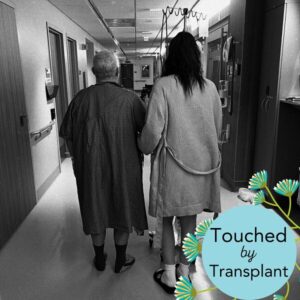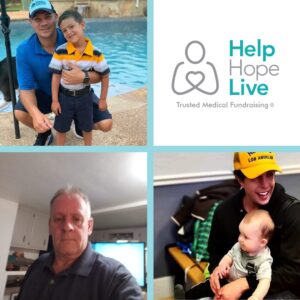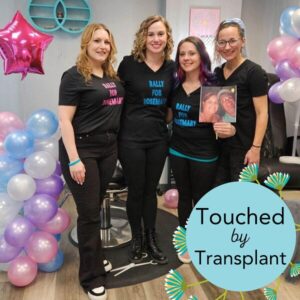Paul Pickard founded Project Walk Atlanta in 2011 with his wife, Jeannie, and his son, Chris, who was paralyzed in a car accident when he was 18 years old. We asked Paul about spinal cord injury rehabilitation and his motivation for opening Project Walk Atlanta.
What did you know about Project Walk when you founded Project Walk Atlanta?
Other than knowing that God placed it on our heart to build the facility in Atlanta, I really didn’t know that much about the PW network. When we founded our center, there was no research or due diligence before building. As crazy as it sounds, in the middle of a recession, we built PWA solely on faith, without a business plan.
What I know today about the four Project Walk centers — located in Orlando, Kansas City, Dallas and Austin — is that they are all very passionate about helping people with spinal cord injuries. These centers opened because there was a serious need in their community and their lives. Each center is filled with love and compassion for its clients.
Can services like the ones offered at Project Walk Atlanta significantly improve quality of life for people who have spinal cord injuries?
All human bodies require movement and some level of exercise. At a bare minimum, people with spinal cord injuries learn how to get their body moving to connect with their paralyzed limbs. Daily quality of life factors such as eating, scratching an itch, brushing teeth, etc. are addressed with our services by training the neuromuscular system.
What are some examples of modern spinal cord injury therapy equipment or technology used at Project Walk Atlanta?
We are fortunate to carry the entire suite of Restorative Therapy Functional Electrical Stimulation machines: RT600, RT300 and RT200. FES coordinates neuromuscular re- education by firing respective muscles in the same order as when a person moves. Some other exciting pieces of equipment:
-The locomotor treadmill is an innovative intervention that helps individuals with gait impairments. The technique is an activity-based therapy that works to retrain the spinal cord to “remember” the pattern of walking again.
–Vibration platform training excites additional muscle fibers to become engaged, improves bone density, and increases circulation and aerobic capacity.
–Tissue regenerative technology uses shock wave energy for tissue regeneration, reducing scar tissue around the injury point and activating the autonomic nervous system.
–The Bioness H200 is electrical stimulation prosthetic for the hands.
Which innovations or technological advances are you most excited about for the future?
Dr. Scott Bertrand’s core development and training devices are promising. Currently in use at his office in Georgia, this device uses rotational mechanics of an isolated muscle contraction on each side of your core to fully engage activity. Other devices that are promising involve body weight-supported gait training which measures speed, stride length, stride width, tempo and weight-bearing percentage to drive performance improvements. And, finally, a new device being made for clinical use is exciting: an EMG portable unit that will measure exact muscle activity, providing the user and the clinician the ability to discern appropriate techniques leading to neuromuscular activity below the level of injury for our clients.
Did your son’s injury influence your outlook on spinal cord damage, therapy, or life in general?
I find myself not complaining as much anymore because I really, really hate this injury with a passion. In a flash of a second, your entire life changes forever. It doesn’t creep up on you; it just annihilates your world.
Does Chris continue to make progress with his own rehabilitation journey?
Rehabilitation takes form in several ways. It is not only physical; it is also spiritual and mental. Chris has made great strides in all three.
What keeps your family moving forward?
FAITH, without a doubt. The strength that our faith in Jesus Christ has given us is the glue that has held us together. There were many nights spent crying, asking God for answers and even getting angry with God. We will never understand nor should we expect to. Without faith and prayer, this injury could become overwhelming at times.
Does your family’s personal experience give you unique insights to share with other families who come to Project Walk Atlanta?
You learn very quickly how to adapt to this injury. At Project Walk Atlanta, every client becomes part of a bigger family that shares and loves one another. We are there to pray with you or cry — whichever!
Is cost a significant barrier to SCI rehabilitation for some families?
Cost is the biggest barrier. If you have a premium insurance policy, you might get reimbursed 75%. Otherwise, you have to rely on fundraising. Although we try to provide scholarships when we can, it is very important that we teach our clients how to fundraise. The average person has never asked for money or knows how. Although there are many online fundraising sites, I always point them to HelpHOPELive where they will get the best guidance to raise funds.
Based on your son Chris’s fundraising efforts with HelpHOPELive, what are some of the costs that SCI-affected families can expect to face 3 to 5 years after injury?
Medical supplies, housing adaptation, standing frames, FES bikes and vehicle modification are a few expenses that can be anticipated
What piece(s) of advice would you offer to someone who was recently injured? What would you tell his or her family?
The advice that I would give someone is to begin fundraising early. This injury is so devastating on families financially that most families can end up in bankruptcy. Everything is so expensive and most insurance will not pay for long-term therapy. Medicaid pays for catheters but won’t pay for suppositories. Go figure!
The PWA website notes: “Everyone needs hope. Without hope you can’t recover.” Do you think that hope or a positive attitude can alter the rehabilitation process?
Absolutely. Without hope, what do you have? Every person affected by spinal cord injury has or once had hope that he or she would recover. Unfortunately, most acute hospitals’ doctors knock the wind from your sail by making statements like “you will not ever walk again” or “get used to the wheelchair.” At the end of the day, only God knows what anyone’s outcome really is.
I know many people that were told they would never walk and now they are beginning to take their first steps, crawl or even walk again. It is that hope and the belief in themselves that helped them get to that point.
Connect with Project Walk on Facebook to learn more about spinal cord injury rehabilitation. You can follow Chris Pickard’s journey on his Campaign Page.
Paul Pickard founded Project Walk Atlanta in 2011 with his wife, Jeannie, and his son, Chris, who was paralyzed in a car accident when he was 18 years old. We asked Paul about spinal cord injury rehabilitation and his motivation for opening Project Walk Atlanta.
What did you know about Project Walk when you founded Project Walk Atlanta?
Other than knowing that God placed it on our heart to build the facility in Atlanta, I really didn’t know that much about the PW network. When we founded our center, there was no research or due diligence before building. As crazy as it sounds, in the middle of a recession, we built PWA solely on faith, without a business plan.
What I know today about the four Project Walk centers — located in Orlando, Kansas City, Dallas and Austin — is that they are all very passionate about helping people with spinal cord injuries. These centers opened because there was a serious need in their community and their lives. Each center is filled with love and compassion for its clients.
Can services like the ones offered at Project Walk Atlanta significantly improve quality of life for people who have spinal cord injuries?
All human bodies require movement and some level of exercise. At a bare minimum, people with spinal cord injuries learn how to get their body moving to connect with their paralyzed limbs. Daily quality of life factors such as eating, scratching an itch, brushing teeth, etc. are addressed with our services by training the neuromuscular system.
What are some examples of modern spinal cord injury therapy equipment or technology used at Project Walk Atlanta?
We are fortunate to carry the entire suite of Restorative Therapy Functional Electrical Stimulation machines: RT600, RT300 and RT200. FES coordinates neuromuscular re- education by firing respective muscles in the same order as when a person moves. Some other exciting pieces of equipment:
-The locomotor treadmill is an innovative intervention that helps individuals with gait impairments. The technique is an activity-based therapy that works to retrain the spinal cord to “remember” the pattern of walking again.
–Vibration platform training excites additional muscle fibers to become engaged, improves bone density, and increases circulation and aerobic capacity.
–Tissue regenerative technology uses shock wave energy for tissue regeneration, reducing scar tissue around the injury point and activating the autonomic nervous system.
–The Bioness H200 is electrical stimulation prosthetic for the hands.
Which innovations or technological advances are you most excited about for the future?
Dr. Scott Bertrand’s core development and training devices are promising. Currently in use at his office in Georgia, this device uses rotational mechanics of an isolated muscle contraction on each side of your core to fully engage activity. Other devices that are promising involve body weight-supported gait training which measures speed, stride length, stride width, tempo and weight-bearing percentage to drive performance improvements. And, finally, a new device being made for clinical use is exciting: an EMG portable unit that will measure exact muscle activity, providing the user and the clinician the ability to discern appropriate techniques leading to neuromuscular activity below the level of injury for our clients.
Did your son’s injury influence your outlook on spinal cord damage, therapy, or life in general?
I find myself not complaining as much anymore because I really, really hate this injury with a passion. In a flash of a second, your entire life changes forever. It doesn’t creep up on you; it just annihilates your world.
Does Chris continue to make progress with his own rehabilitation journey?
Rehabilitation takes form in several ways. It is not only physical; it is also spiritual and mental. Chris has made great strides in all three.
What keeps your family moving forward?
FAITH, without a doubt. The strength that our faith in Jesus Christ has given us is the glue that has held us together. There were many nights spent crying, asking God for answers and even getting angry with God. We will never understand nor should we expect to. Without faith and prayer, this injury could become overwhelming at times.
Does your family’s personal experience give you unique insights to share with other families who come to Project Walk Atlanta?
You learn very quickly how to adapt to this injury. At Project Walk Atlanta, every client becomes part of a bigger family that shares and loves one another. We are there to pray with you or cry — whichever!
Is cost a significant barrier to SCI rehabilitation for some families?
Cost is the biggest barrier. If you have a premium insurance policy, you might get reimbursed 75%. Otherwise, you have to rely on fundraising. Although we try to provide scholarships when we can, it is very important that we teach our clients how to fundraise. The average person has never asked for money or knows how. Although there are many online fundraising sites, I always point them to HelpHOPELive where they will get the best guidance to raise funds.
Based on your son Chris’s fundraising efforts with HelpHOPELive, what are some of the costs that SCI-affected families can expect to face 3 to 5 years after injury?
Medical supplies, housing adaptation, standing frames, FES bikes and vehicle modification are a few expenses that can be anticipated
What piece(s) of advice would you offer to someone who was recently injured? What would you tell his or her family?
The advice that I would give someone is to begin fundraising early. This injury is so devastating on families financially that most families can end up in bankruptcy. Everything is so expensive and most insurance will not pay for long-term therapy. Medicaid pays for catheters but won’t pay for suppositories. Go figure!
The PWA website notes: “Everyone needs hope. Without hope you can’t recover.” Do you think that hope or a positive attitude can alter the rehabilitation process?
Absolutely. Without hope, what do you have? Every person affected by spinal cord injury has or once had hope that he or she would recover. Unfortunately, most acute hospitals’ doctors knock the wind from your sail by making statements like “you will not ever walk again” or “get used to the wheelchair.” At the end of the day, only God knows what anyone’s outcome really is.
I know many people that were told they would never walk and now they are beginning to take their first steps, crawl or even walk again. It is that hope and the belief in themselves that helped them get to that point.
Connect with Project Walk on Facebook to learn more about spinal cord injury rehabilitation. You can follow Chris Pickard’s journey on his Campaign Page.











